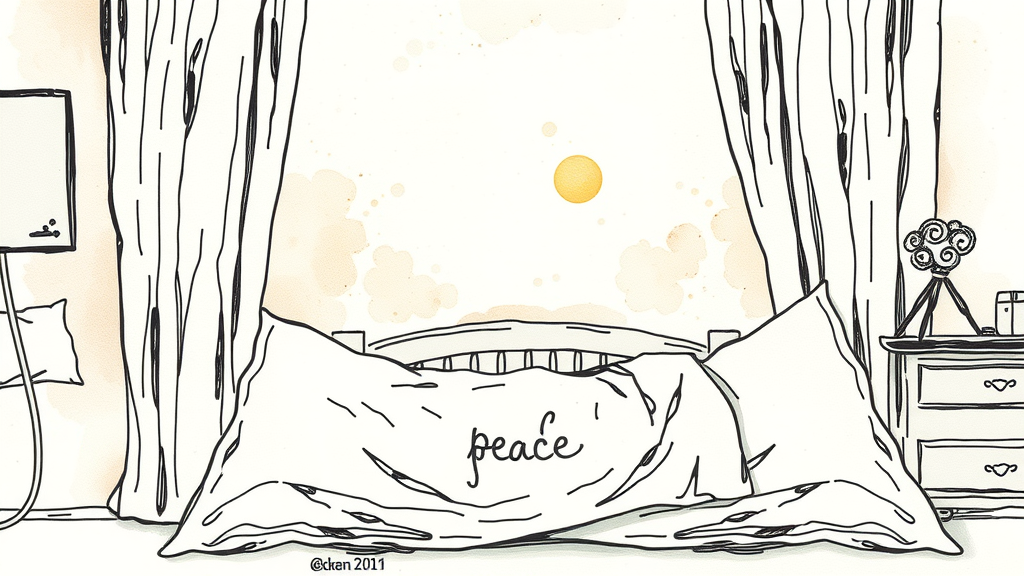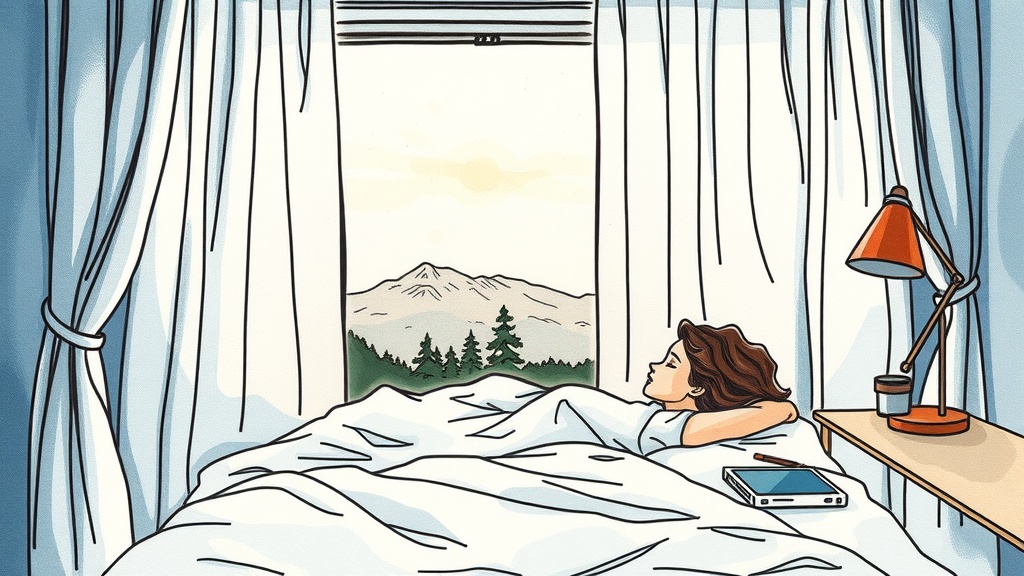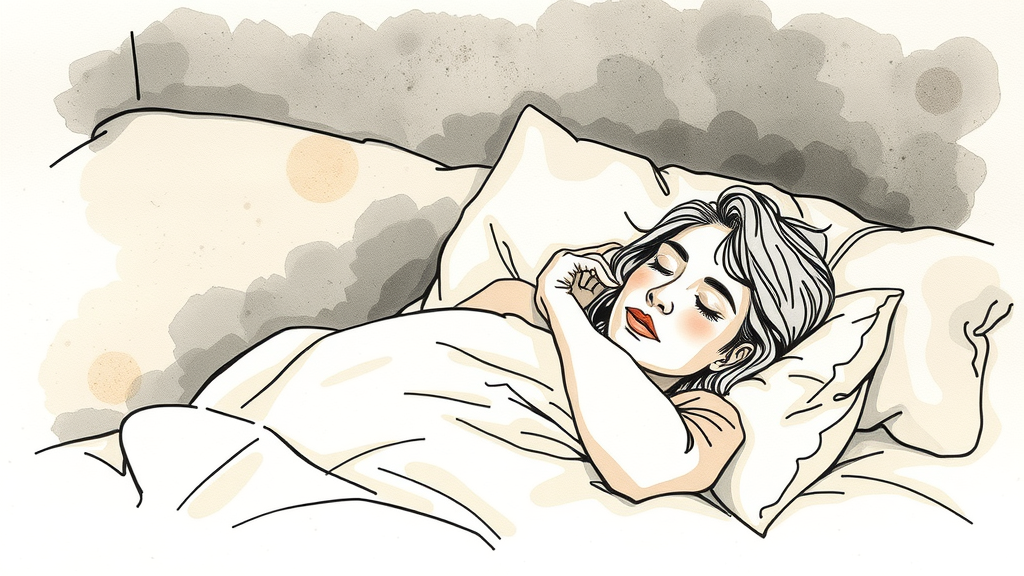· Don Schmidt · Guides · 8 min read
The Ultimate Guide to CBTI for Teachers: Reclaiming Rest and Well-being
Discover how Cognitive Behavioral Therapy for Insomnia (CBTI) can transform your sleep and well-being as a teacher. Get practical strategies to overcome insomnia.
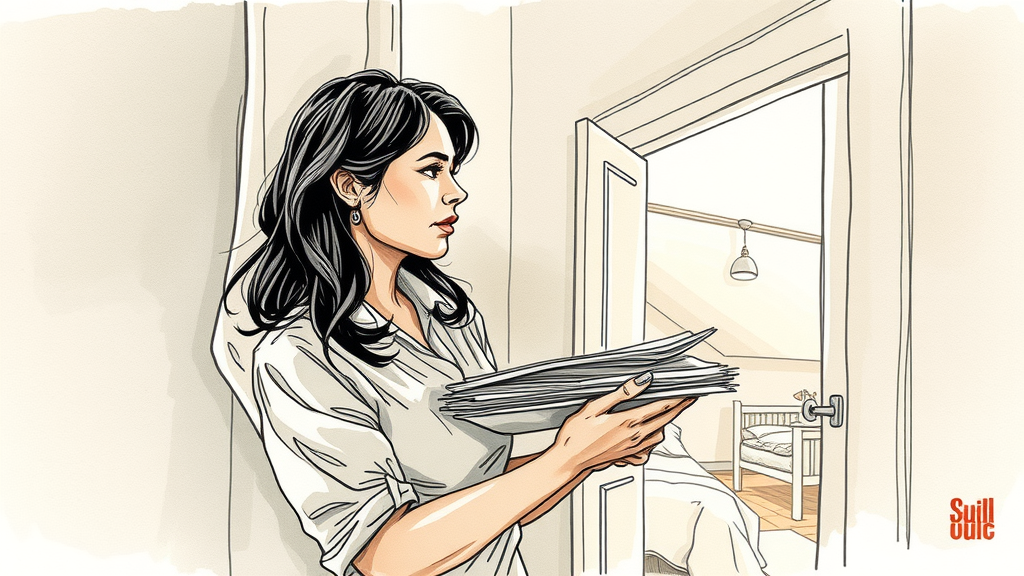
Introduction: The Teacher’s Quest for Rest
Being a teacher is more than a job; it’s a calling that demands immense energy, patience, and dedication. From lesson planning and classroom management to grading papers and nurturing young minds, the demands are relentless. This high-pressure environment often leaves little room for personal well-being, and one of the first casualties is often sleep. If you’re a teacher struggling with sleepless nights, waking up exhausted, or finding it hard to stay alert throughout the day, you’re not alone. Insomnia is a pervasive issue, and for educators, its impact can ripple through every aspect of their professional and personal lives.
This ultimate guide is designed specifically for you – the dedicated teacher – to introduce you to Cognitive Behavioral Therapy for Insomnia (CBTI). This evidence-based approach is widely recognized as the most effective long-term solution for chronic sleep problems. We’ll delve into what CBTI entails, why it’s particularly beneficial for the unique challenges faced by teachers, and provide actionable strategies you can implement to reclaim your rest and vitality. By understanding and applying the principles of CBTI, you can transform your relationship with sleep, leading to improved health, greater resilience, and enhanced performance in the classroom.
What is CBTI and Why is it Essential for Teachers?
CBTI stands for Cognitive Behavioral Therapy for Insomnia. Unlike quick fixes like sleeping pills, CBTI addresses the root causes of insomnia by targeting the thoughts, feelings, and behaviors that interfere with sleep. It’s a comprehensive program that equips individuals with tools to overcome chronic sleeplessness permanently. For a deeper dive into the fundamentals, you might want to explore /what-is-cbt-i, which covers what is cbti in detail.
Understanding Insomnia in the Teaching Profession
Teachers often face unique stressors that contribute to sleep disturbances:
- High Workload and Long Hours: The sheer volume of work often extends beyond school hours, infringing on time needed for winding down.
- Emotional Labor: Managing diverse student needs, parent interactions, and school politics can be emotionally draining.
- Early Mornings: The need to be at school early often conflicts with natural sleep cycles, especially if bedtime is pushed back by work.
- Performance Anxiety: The constant pressure to perform, inspire, and manage a classroom can lead to racing thoughts at night.
- Burnout Risk: Chronic stress can lead to burnout, which severely impacts sleep quality.
These factors create a perfect storm for chronic insomnia, making effective sleep therapy like CBTI not just helpful, but essential.
The Power of CBTI
CBTI is not merely about tips for better sleep hygiene; it’s a structured program that helps you re-learn how to sleep. It helps you identify and change the thought patterns and behaviors that keep you awake. The effectiveness of CBTI lies in its ability to empower you with lasting strategies, reducing reliance on medication and fostering genuine, restorative sleep.
Core Components of CBTI
CBTI typically involves several key components, each playing a crucial role in re-establishing healthy sleep patterns:
Sleep Restriction
This counter-intuitive technique involves temporarily limiting the time you spend in bed to consolidate sleep. The idea is to build a stronger sleep drive by increasing your wakefulness during the day. As your sleep efficiency improves, your time in bed is gradually increased. This helps your body associate the bed with sleep, not wakefulness.
Stimulus Control
This component aims to break the negative associations many insomniacs develop with their bed and bedroom. It involves a set of rules designed to link your bed solely with sleep and intimacy:
- Go to bed only when sleepy.
- Use the bed only for sleep and sex; no reading, watching TV, or working in bed.
- If you can’t fall asleep within 20 minutes, get out of bed and go to another room. Return to bed only when sleepy again.
- Wake up at the same time every day, regardless of how much you slept the night before.
- Avoid napping during the day.
Cognitive Restructuring
This element addresses the racing thoughts, worries, and anxieties that often accompany insomnia. Many teachers find their minds buzzing with lesson plans, student issues, or school politics at night. Cognitive restructuring teaches you to identify and challenge unhelpful sleep-related thoughts (e.g., “I’ll never sleep,” “I won’t be able to function tomorrow”) and replace them with more realistic and positive ones.
Sleep Hygiene Education
While not the sole focus of CBTI, good sleep hygiene practices are foundational. This involves educating you about daily habits and environmental factors that promote healthy sleep. Key aspects include:
- Maintaining a consistent sleep schedule.
- Creating a dark, quiet, and cool bedroom environment.
- Avoiding caffeine and heavy meals close to bedtime.
- Limiting screen time before sleep.
Relaxation Techniques
Learning to relax and calm your mind and body is essential for sleep. CBTI often incorporates techniques such as progressive muscle relaxation, diaphragmatic breathing, and mindfulness meditation. These practices help reduce physical tension and mental chatter, preparing your body for sleep.
Implementing CBTI Strategies in Your Life
Taking charge of your sleep requires commitment, but the benefits are profound. Here’s how you can start integrating CBTI principles.
Creating a Sleep-Conducive Environment
Your bedroom should be a sanctuary for sleep. Ensure it’s:
- Dark: Use blackout curtains or an eye mask.
- Quiet: Consider earplugs or a white noise machine.
- Cool: The ideal temperature is usually between 60-67°F (15-19°C).
- Comfortable: Invest in a good mattress and pillows.
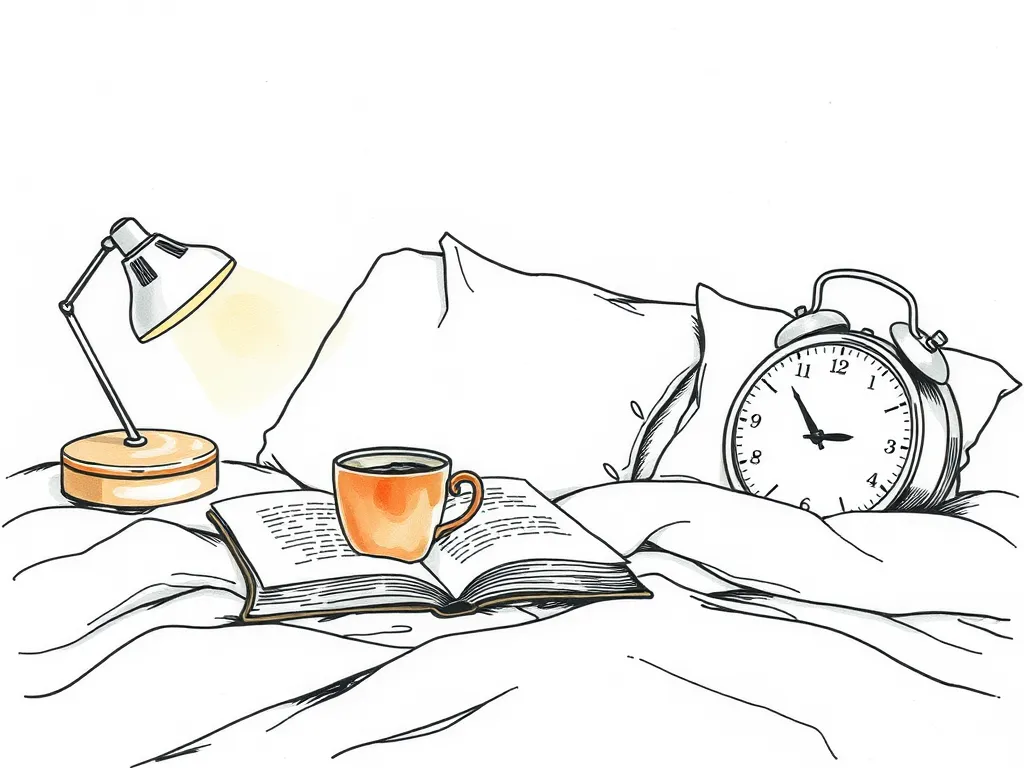
Remove all work-related materials from your bedroom to reinforce it as a place of rest.
Establishing a Consistent Sleep Schedule
This is perhaps one of the most challenging but crucial steps for teachers, especially with varied schedules and weekend plans. Aim to go to bed and wake up at the same time every day, including weekends. This helps regulate your body’s natural sleep-wake cycle (circadian rhythm).
Managing Stress and Anxieties
Given the demanding nature of teaching, stress management is key. Incorporate daily practices that help you unwind:
- Mindfulness and Meditation: Even 10-15 minutes can make a difference.
- Light Exercise: Regular physical activity (but not too close to bedtime) can improve sleep quality.
- Journaling: Write down your worries before bed to get them out of your head.
- Establishing a “Buffer Zone”: Create a transition period of 30-60 minutes before bed, free from work, screens, or intense discussions.
When to Seek Professional Help
While this guide provides an overview, implementing CBTI effectively often benefits from professional guidance. A certified CBTI therapist can tailor the program to your specific needs, provide support, and troubleshoot challenges. If your insomnia is severe or persistent, or if you suspect an underlying medical condition, consult a doctor or a sleep specialist.
Benefits of Improved Sleep for Teachers
Overcoming insomnia through CBTI offers a wealth of benefits that directly impact your effectiveness as an educator and your overall quality of life.
Enhanced Focus and Performance
Adequate sleep sharpens cognitive functions, including attention, concentration, and problem-solving. A well-rested teacher is better equipped to plan engaging lessons, manage classroom dynamics, and support student learning effectively.
Improved Mood and Resilience
Chronic sleep deprivation often leads to irritability, mood swings, and reduced emotional resilience. Restorative sleep helps regulate emotions, making you more patient, empathetic, and better able to handle the daily emotional demands of teaching. You’ll find yourself less reactive to minor classroom disruptions and more present for your students.
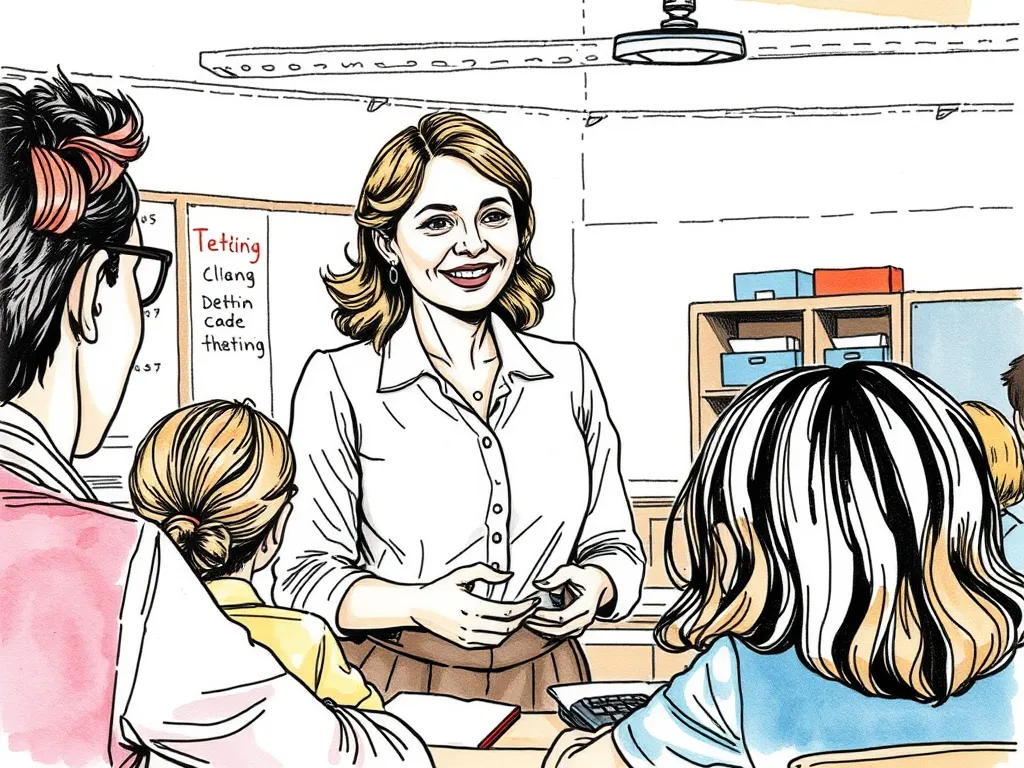
Better Physical Health
Sleep is vital for physical restoration and immune function. Good sleep reduces the risk of chronic diseases, boosts your immune system, and provides the physical energy needed to keep up with active children and demanding schedules. This means fewer sick days and more consistent presence in the classroom.
Frequently Asked Questions About CBTI for Teachers
Q1: Is CBTI a quick fix for insomnia?
A1: No, CBTI is not a quick fix. It’s a structured, therapeutic approach that requires commitment and consistency over several weeks to yield lasting results. It focuses on changing long-standing habits and thought patterns.
Q2: Can I combine CBTI with sleep medication?
A2: It’s generally recommended to eventually taper off sleep medication while undergoing CBTI, under the guidance of a healthcare professional. CBTI aims to provide long-term solutions without relying on pharmaceuticals.
Q3: How long does it take for CBTI to work?
A3: While individual results vary, most people start to see noticeable improvements within 4 to 8 weeks of consistent application of CBTI principles. The full benefits can take a bit longer to solidify.
Q4: Do I need a therapist to do CBTI?
A4: While self-help resources and apps are available, working with a certified CBTI therapist is highly recommended. A therapist can provide personalized guidance, adjust strategies as needed, and help you navigate challenges, ensuring the most effective outcome. Some health systems and universities also offer group CBTI programs.
Q5: Will CBTI interfere with my teaching schedule?
A5: Initially, the sleep restriction component might feel challenging as it requires strict adherence to a schedule. However, the goal of CBTI is to improve your overall sleep efficiency and well-being, ultimately making you more functional and energetic during your teaching hours. The benefits typically outweigh the initial adjustments.
Assess Your Sleep Quality Today
Take our My Sleep Health Score assessment to get personalized insights about your sleep patterns and discover how CBT-I can help you achieve better sleep.
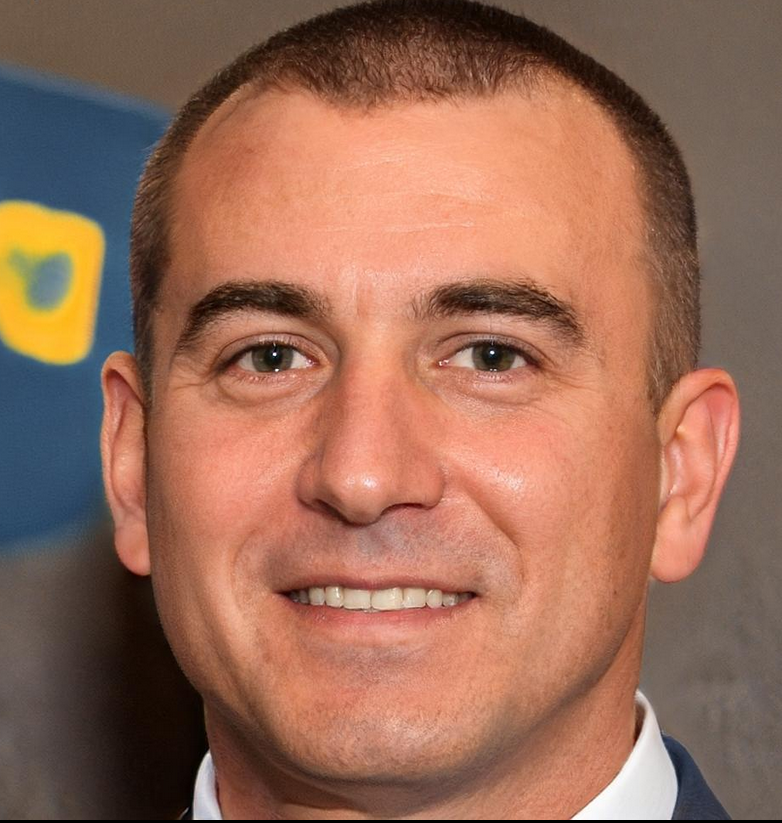
Don Schmidt
15+ years of experience in sleep therapy and Cognitive Behavioral Therapy for Insomnia (CBT-I). Passionate about connecting individuals struggling with sleep disorders to evidence-based, non-medical treatment solutions. Author of hundreds of articles and comprehensive guides on sleep health, CBT-I techniques, and overcoming insomnia. When not helping clients achieve better sleep, you can find me hiking with my family and dogs or enjoying a good book.
Ready to connect with a provider?
Allow us to connect you with a provider who can help.
